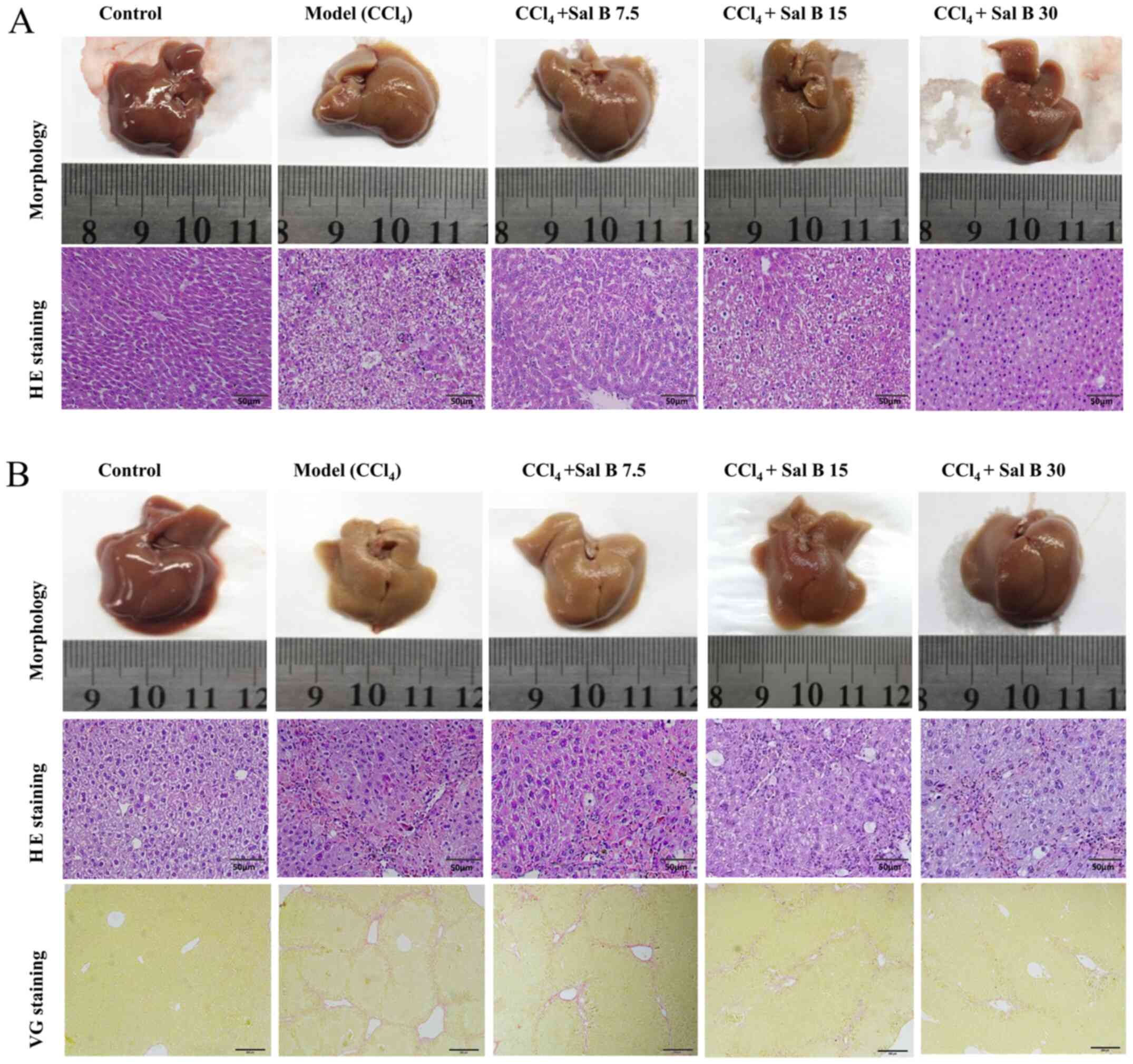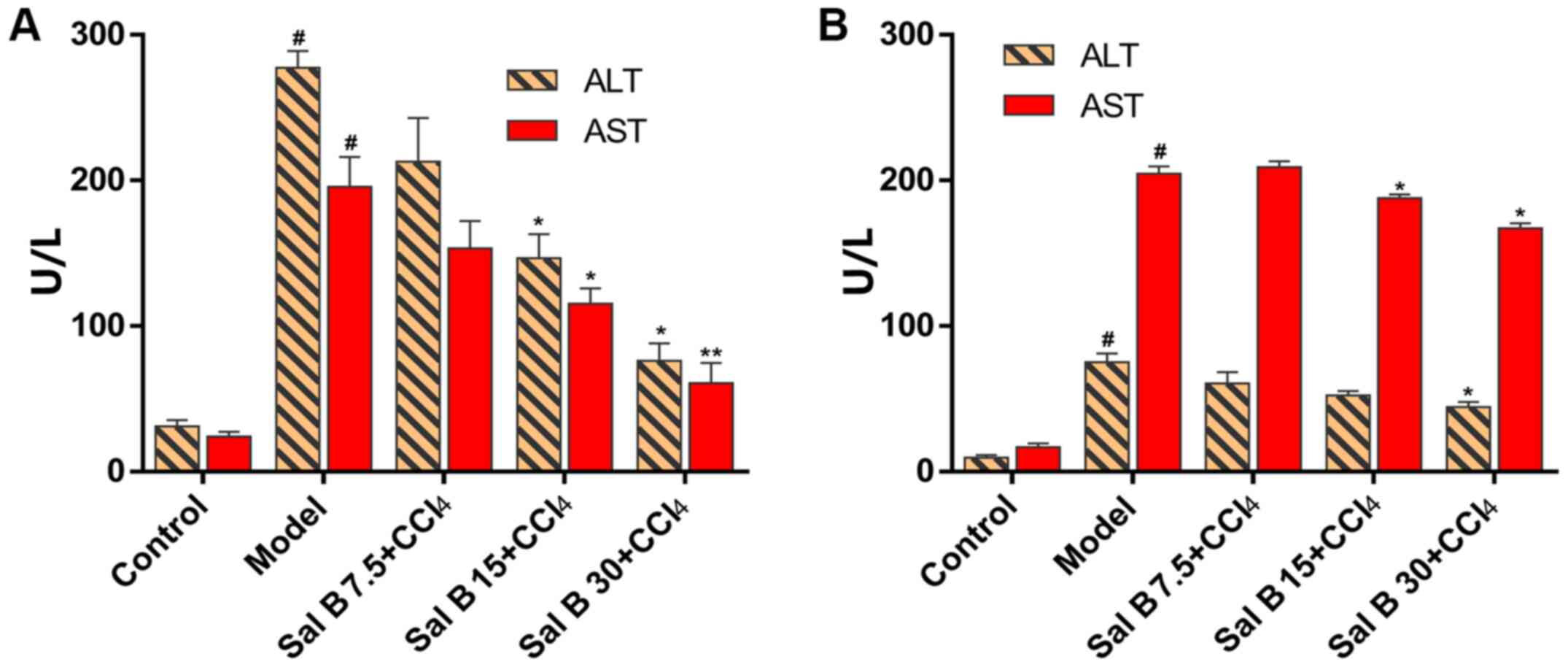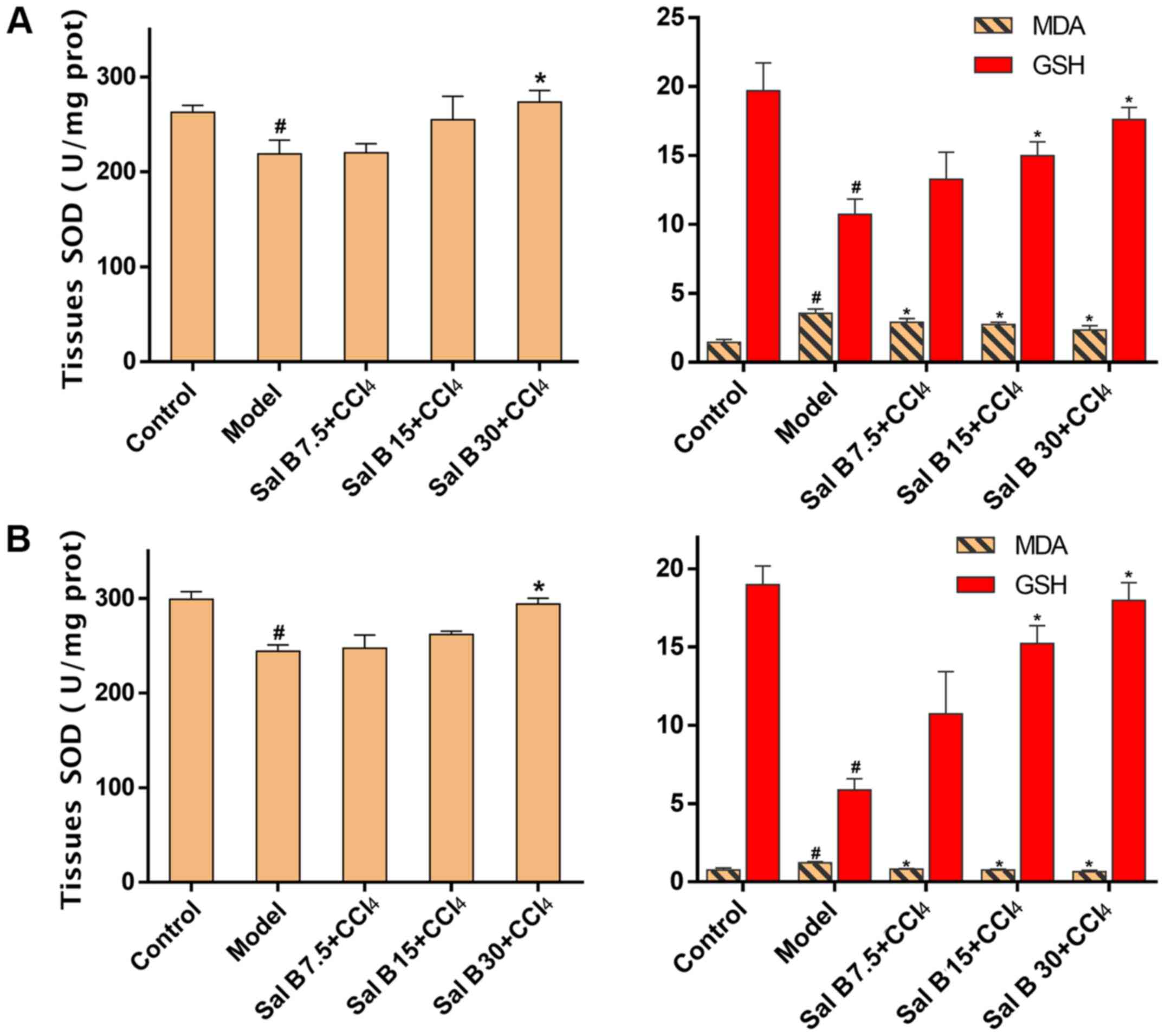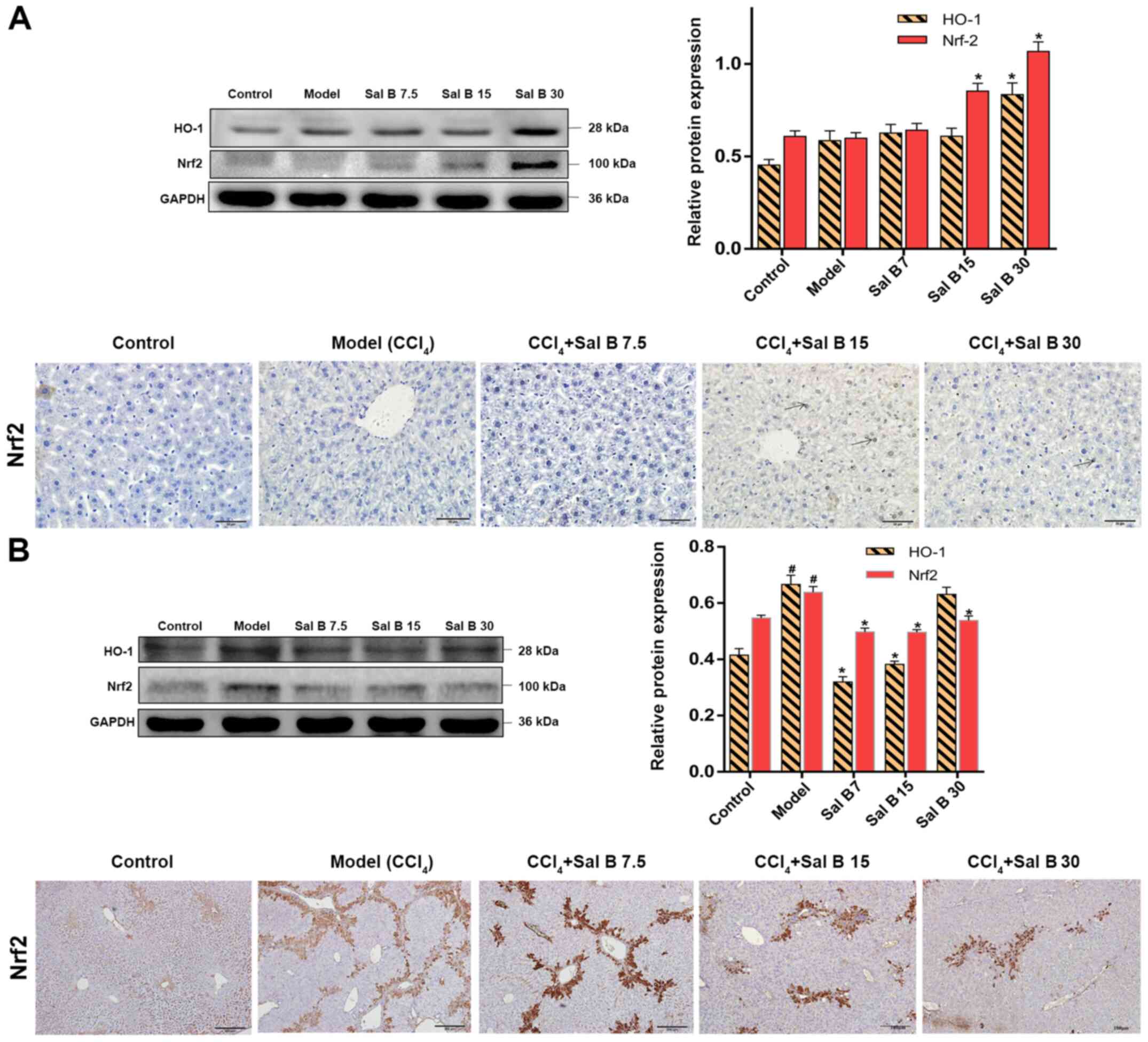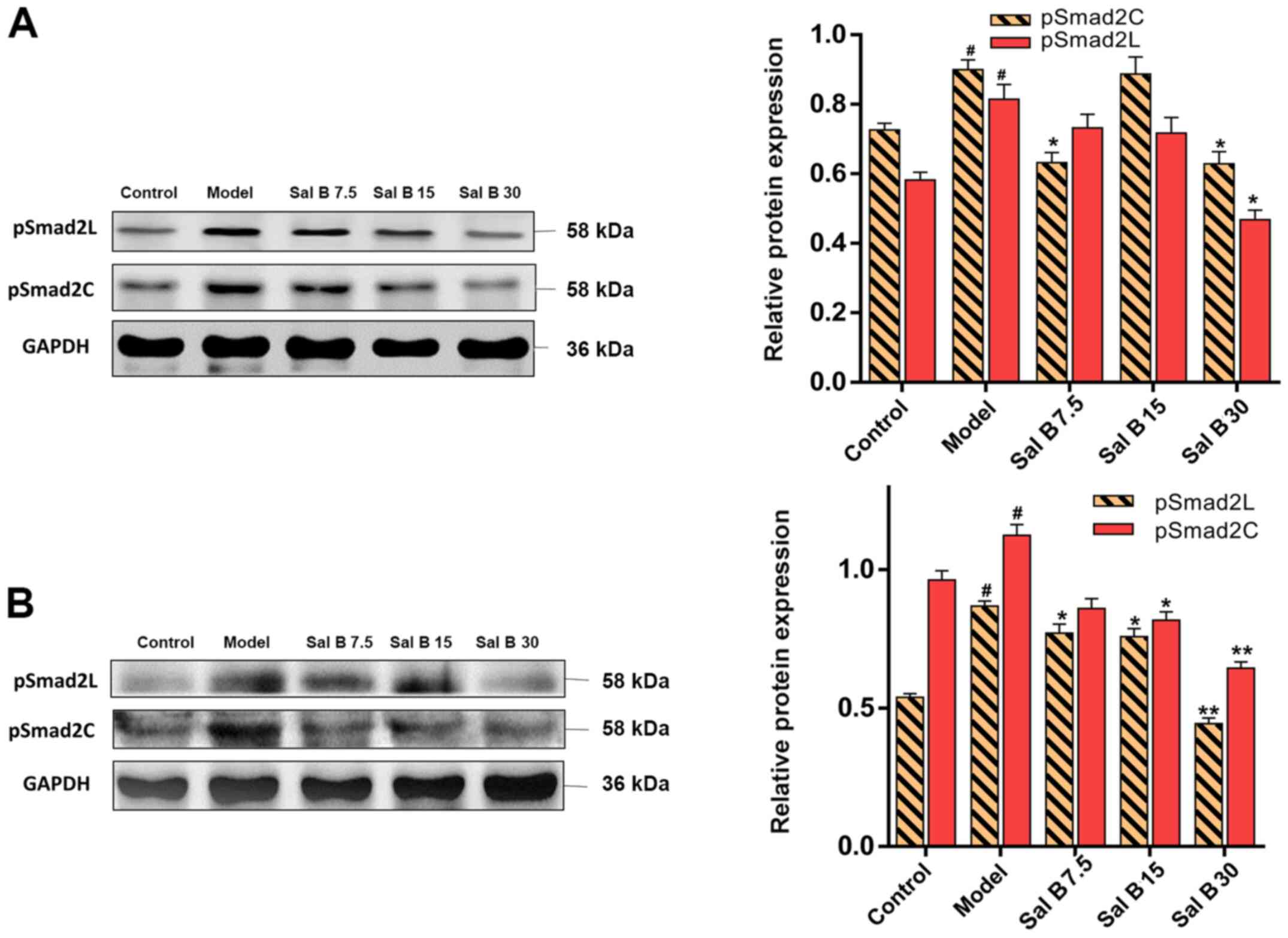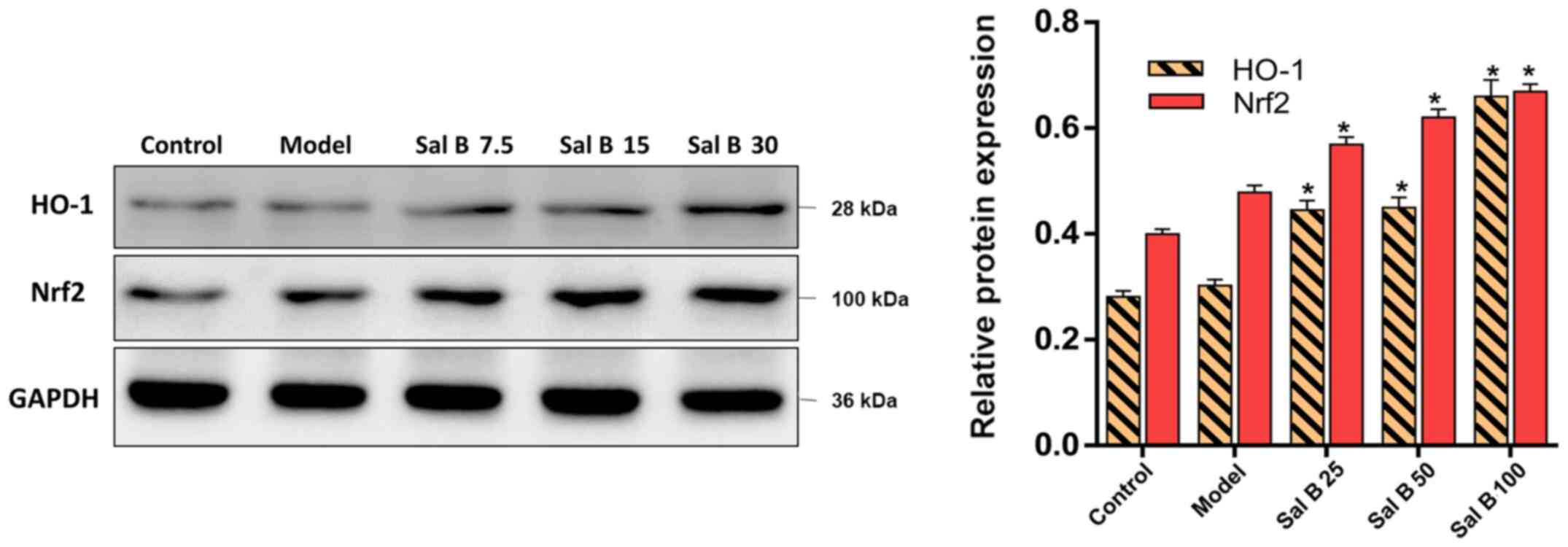|
1
|
Ramadori G, Moriconi F, Malik I and Dudas
J: Physiology and pathophysiology of liver inflammation, damage and
repair. J Physiol Pharmacol. 59:107–117. 2008.PubMed/NCBI
|
|
2
|
Hernandez-Gea V and Friedman SL:
Pathogenesis of liver fibrosis. Annu Rev Pathol. 6:425–456.
2011.PubMed/NCBI View Article : Google Scholar
|
|
3
|
Enomoto M, Morikawa H, Tamori A and Kawada
N: Noninvasive assessment of liver fibrosis in patients with
chronic hepatitis B. World J Gastroenterol. 20:12031–12038.
2014.PubMed/NCBI View Article : Google Scholar
|
|
4
|
Dewidar B, Meyer C, Dooley S and
Meindl-Beinker AN: TGF-β in hepatic stellate cell activation and
liver fibrogenesis-Updated 2019. Cells. 8(8)2019.PubMed/NCBI View Article : Google Scholar
|
|
5
|
Xu F, Liu C, Zhou D and Zhang L:
TGF-β/SMAD pathway and its regulation in hepatic fibrosis. J
Histochem Cytochem. 64:157–167. 2016.PubMed/NCBI View Article : Google Scholar
|
|
6
|
Yoshida K, Murata M, Yamaguchi T,
Matsuzaki K and Okazaki K: Reversible human TGF-β signal shifting
between tumor suppression and fibro-carcinogenesis: Implications of
Smad phospho-isoforms for hepatic epithelial-mesenchymal
transitions. J Clin Med. 5(5)2016.PubMed/NCBI View Article : Google Scholar
|
|
7
|
Yoshida K, Murata M, Yamaguchi T and
Matsuzaki K: TGF-β/Smad signaling during hepatic
fibro-carcinogenesis (review). Int J Oncol. 45:1363–1371.
2014.PubMed/NCBI View Article : Google Scholar
|
|
8
|
Matsuzaki K: Smad phosphoisoform signals
in acute and chronic liver injury: Similarities and differences
between epithelial and mesenchymal cells. Cell Tissue Res.
347:225–243. 2012.PubMed/NCBI View Article : Google Scholar
|
|
9
|
Arfmann-Knübel S, Struck B, Genrich G,
Helm O, Sipos B, Sebens S and Schäfer H: The crosstalk between Nrf2
and TGF-β1 in the epithelial-mesenchymal transition of pancreatic
duct epithelial cells. PLoS One. 10(e0132978)2015.PubMed/NCBI View Article : Google Scholar
|
|
10
|
Choi HK, Pokharel YR, Lim SC, Han HK, Ryu
CS, Kim SK, Kwak MK and Kang KW: Inhibition of liver fibrosis by
solubilized coenzyme Q10: Role of Nrf2 activation in inhibiting
transforming growth factor-beta1 expression. Toxicol Appl
Pharmacol. 240:377–384. 2009.PubMed/NCBI View Article : Google Scholar
|
|
11
|
Okita Y, Kamoshida A, Suzuki H, Itoh K,
Motohashi H, Igarashi K, Yamamoto M, Ogami T, Koinuma D and Kato M:
Transforming growth factor-β induces transcription factors MafK and
Bach1 to suppress expression of the heme oxygenase-1 gene. J Biol
Chem. 288:20658–20667. 2013.PubMed/NCBI View Article : Google Scholar
|
|
12
|
Michaeloudes C, Chang PJ, Petrou M and
Chung KF: Transforming growth factor-β and nuclear factor
E2–related factor 2 regulate antioxidant responses in airway smooth
muscle cells: Role in asthma. Am J Respir Crit Care Med.
184:894–903. 2011.PubMed/NCBI View Article : Google Scholar
|
|
13
|
Cao W, Guo XW, Zheng HZ, Li DP, Jia GB and
Wang J: Current progress of research on pharmacologic actions of
salvianolic acid B. Chin J Integr Med. 18:316–320. 2012.PubMed/NCBI View Article : Google Scholar
|
|
14
|
Lin YL, Wu CH, Luo MH, Huang YJ, Wang CN,
Shiao MS and Huang YT: In vitro protective effects of salvianolic
acid B on primary hepatocytes and hepatic stellate cells. J
Ethnopharmacol. 105:215–222. 2006.PubMed/NCBI View Article : Google Scholar
|
|
15
|
Tao YY, Wang QL, Shen L, Fu WW and Liu CH:
Salvianolic acid B inhibits hepatic stellate cell activation
through transforming growth factor beta-1 signal transduction
pathway in vivo and in vitro. Exp Biol Med (Maywood).
238:1284–1296. 2013.PubMed/NCBI View Article : Google Scholar
|
|
16
|
Ying M, Meng F, Chao W, et al: Salvianolic
acid B exerts anti-hepatic fibrosis-carcinoma effect via mediation
of pSmad3C/pSmad3L. Zhongguo Yaolixue Tongbao. 1:44–50. 2018.
|
|
17
|
Jiang W, Gao M, Sun S, Bi A, Xin Y, Han X,
Wang L, Yin Z and Luo L: Protective effect of L-theanine on carbon
tetrachloride-induced acute liver injury in mice. Biochem Biophys
Res Commun. 422:344–350. 2012.PubMed/NCBI View Article : Google Scholar
|
|
18
|
Chu X, Wang H, Jiang YM, Zhang YY, Bao YF,
Zhang X, Zhang JP, Guo H, Yang F, Luan YC, et al: Ameliorative
effects of tannic acid on carbon tetrachloride-induced liver
fibrosis in vivo and in vitro. J Pharmacol Sci. 130:15–23.
2016.PubMed/NCBI View Article : Google Scholar
|
|
19
|
El-Wakeel SA, Rahmo RM and El-Abhar HS:
Anti-fibrotic impact of Carvedilol in a CCl-4 model of liver
fibrosis via serum microRNA-200a/SMAD7 enhancement to bridle
TGF-β1/EMT track. Sci Rep. 8(14327)2018.PubMed/NCBI View Article : Google Scholar
|
|
20
|
Al-Saeedi FJ: Study of the cytotoxicity of
asiaticoside on rats and tumour cells. BMC Cancer.
14(220)2014.PubMed/NCBI View Article : Google Scholar
|
|
21
|
Hu X, Liang Y, Zhao B and Wang Y:
Oxyresveratrol protects human lens epithelial cells against
hydrogen peroxide-induced oxidative stress and apoptosis by
activation of Akt/HO-1 pathway. J Pharmacol Sci. 139:166–173.
2019.PubMed/NCBI View Article : Google Scholar
|
|
22
|
Loboda A, Damulewicz M, Pyza E, Jozkowicz
A and Dulak J: Role of Nrf2/HO-1 system in development, oxidative
stress response and diseases: An evolutionarily conserved
mechanism. Cell Mol Life Sci. 73:3221–3247. 2016.PubMed/NCBI View Article : Google Scholar
|
|
23
|
Morita M, Ishida N, Uchiyama K, Yamaguchi
K, Itoh Y, Shichiri M, Yoshida Y, Hagihara Y, Naito Y, Yoshikawa T,
et al: Fatty liver induced by free radicals and lipid peroxidation.
Free Radic Res. 46:758–765. 2012.PubMed/NCBI View Article : Google Scholar
|
|
24
|
Patel SJ, Milwid JM, King KR, Bohr S,
Iracheta-Vellve A, Li M, Vitalo A, Parekkadan B, Jindal R and
Yarmush ML: Gap junction inhibition prevents drug-induced liver
toxicity and fulminant hepatic failure. Nat Biotechnol. 30:179–183.
2012.PubMed/NCBI View Article : Google Scholar
|
|
25
|
Tsukamoto H, French SW, Benson N, Delgado
G, Rao GA, Larkin EC and Largman C: Severe and progressive
steatosis and focal necrosis in rat liver induced by continuous
intragastric infusion of ethanol and low fat diet. Hepatology.
5:224–232. 1985.PubMed/NCBI View Article : Google Scholar
|
|
26
|
Schuppan D: Liver fibrosis: Common
mechanisms and antifibrotic therapies. Clin Res Hepatol
Gastroenterol. 39:51–59. 2015.PubMed/NCBI View Article : Google Scholar
|
|
27
|
Chen SR, Chen XP, Lu JJ, Wang Y and Wang
YT: Potent natural products and herbal medicines for treating liver
fibrosis. Chin Med. 10(7)2015.PubMed/NCBI View Article : Google Scholar
|
|
28
|
Stickel F and Schuppan D: Herbal medicine
in the treatment of liver diseases. Dig Liver Dis. 39:293–304.
2007.PubMed/NCBI View Article : Google Scholar
|
|
29
|
Ma X, Peng JH and Hu YY: Chinese Herbal
Medicine-induced liver injury. J Clin Transl Hepatol. 2:170–175.
2014.PubMed/NCBI View Article : Google Scholar
|
|
30
|
Rui W, Xie L, Liu X, He S, Wu C, Zhang X,
Zhang L and Yang Y: Compound Astragalus and Salvia
miltiorrhiza extract suppresses hepatocellular carcinoma
progression by inhibiting fibrosis and PAI-1 mRNA transcription. J
Ethnopharmacol. 151:198–209. 2014.PubMed/NCBI View Article : Google Scholar
|
|
31
|
Liu T, Xia Y, Li J, Li S, Feng J, Wu L,
Zhang R, Xu S, Cheng K, Zhou Y, et al: Shikonin attenuates
Concanavalin A-induced acute liver injury in mice via inhibition of
the JNK pathway. Mediators Inflamm. 2016(2748367)2016.PubMed/NCBI View Article : Google Scholar
|
|
32
|
Clark JM, Brancati FL and Diehl AM: The
prevalence and etiology of elevated aminotransferase levels in the
United States. Am J Gastroenterol. 98:960–967. 2003.PubMed/NCBI View Article : Google Scholar
|
|
33
|
Anderson FH, Zeng L, Rock NR and Yoshida
EM: An assessment of the clinical utility of serum ALT and AST in
chronic hepatitis C. Hepatol Res. 18:63–71. 2000.PubMed/NCBI View Article : Google Scholar
|
|
34
|
Giannini E, Botta F, Fasoli A, Ceppa P,
Risso D, Lantieri PB, Celle G and Testa R: Progressive liver
functional impairment is associated with an increase in AST/ALT
ratio. Dig Dis Sci. 44:1249–1253. 1999.PubMed/NCBI View Article : Google Scholar
|
|
35
|
Bhadauria M, Nirala SK, Shrivastava S,
Sharma A, Johri S, Chandan BK, Singh B, Saxena AK and Shukla S:
Emodin reverses CCl induced hepatic cytochrome P450 (CYP) enzymatic
and ultrastructural changes: The in vivo evidence. Hepatol Res.
39:290–300. 2009.PubMed/NCBI View Article : Google Scholar
|
|
36
|
Comporti M: Three models of free
radical-induced cell injury. Chem Biol Interact. 72:1–56.
1989.PubMed/NCBI View Article : Google Scholar
|
|
37
|
Sies H: Oxidative stress: A concept in
redox biology and medicine. Redox Biol. 4:180–183. 2015.PubMed/NCBI View Article : Google Scholar
|
|
38
|
Kalpravidh RW, Siritanaratkul N, Insain P,
Charoensakdi R, Panichkul N, Hatairaktham S, Srichairatanakool S,
Phisalaphong C, Rachmilewitz E and Fucharoen S: Improvement in
oxidative stress and antioxidant parameters in beta-thalassemia/Hb
E patients treated with curcuminoids. Clin Biochem. 43:424–429.
2010.PubMed/NCBI View Article : Google Scholar
|
|
39
|
Liu RM and Desai LP: Reciprocal regulation
of TGF-β and reactive oxygen species: A perverse cycle for
fibrosis. Redox Biol. 6:565–577. 2015.PubMed/NCBI View Article : Google Scholar
|
|
40
|
Derynck R and Zhang YE: Smad-dependent and
Smad-inde pendent pathways in TGF-beta family signalling. Nature.
425:577–584. 2003.PubMed/NCBI View Article : Google Scholar
|
|
41
|
Inagaki Y and Okazaki I: Emerging insights
into transforming growth factor beta Smad signal in hepatic
fibrogenesis. Gut. 56:284–292. 2007.PubMed/NCBI View Article : Google Scholar
|
|
42
|
Hu HH, Chen DQ, Wang YN, Feng YL, Cao G,
Vaziri ND and Zhao YY: New insights into TGF-β/Smad signaling in
tissue fibrosis. Chem Biol Interact. 292:76–83. 2018.PubMed/NCBI View Article : Google Scholar
|
|
43
|
Burch ML, Yang SNY, Ballinger ML, Getachew
R, Osman N and Little PJ: TGF-beta stimulates biglycan synthesis
via p38 and ERK phosphorylation of the linker region of Smad2. Cell
Mol Life Sci. 67:2077–2090. 2010.PubMed/NCBI View Article : Google Scholar
|
|
44
|
Zhang H, Liu YY, Jiang Q, Li KR, Zhao YX,
Cao C and Yao J: Salvianolic acid A protects RPE cells against
oxidative stress through activation of Nrf2/HO-1 signaling. Free
Radic Biol Med. 69:219–228. 2014.PubMed/NCBI View Article : Google Scholar
|
|
45
|
Oh CJ, Kim JY, Min AK, Park KG, Harris RA,
Kim HJ and Lee IK: Sulforaphane attenuates hepatic fibrosis via
NF-E2-related factor 2-mediated inhibition of transforming growth
factor-β/Smad signaling. Free Radic Biol Med. 52:671–682.
2012.PubMed/NCBI View Article : Google Scholar
|
|
46
|
Chen Q, Zhang H, Cao Y, Li Y, Sun S, Zhang
J and Zhang G: Schisandrin B attenuates CCl4-induced
liver fibrosis in rats by regulation of Nrf2-ARE and TGF-β/Smad
signaling pathways. Drug Des Devel Ther. 11:2179–2191.
2017.PubMed/NCBI View Article : Google Scholar
|
|
47
|
Zhang X, Wu Q, Lu Y, Wan J, Dai H, Zhou X,
Lv S, Chen X, Zhang X, Hang C, et al: Cerebroprotection by
salvianolic acid B after experimental subarachnoid hemorrhage
occurs via Nrf2- and SIRT1-dependent pathways. Free Radic Biol Med.
124:504–516. 2018.PubMed/NCBI View Article : Google Scholar
|
|
48
|
Liu M, Xu H, Zhang L, Zhang C, Yang L, Ma
E, Liu L and Li Y: Salvianolic acid B inhibits myofibroblast
transdifferentiation in experimental pulmonary fibrosis via the
up-regulation of Nrf2. Biochem Biophys Res Commun. 495:325–331.
2018.PubMed/NCBI View Article : Google Scholar
|
|
49
|
Wang B, Sun J, Shi Y and Le G: Salvianolic
acid B inhibits high-fat diet-induced inflammation by activating
the Nrf2 pathway. J Food Sci. 82:1953–1960. 2017.PubMed/NCBI View Article : Google Scholar
|
|
50
|
Lu C, Xu W and Zheng S: Nrf2 activation is
required for curcumin to induce lipocyte phenotype in hepatic
stellate cells. Biomed Pharmacother. 95:1–10. 2017.PubMed/NCBI View Article : Google Scholar
|















